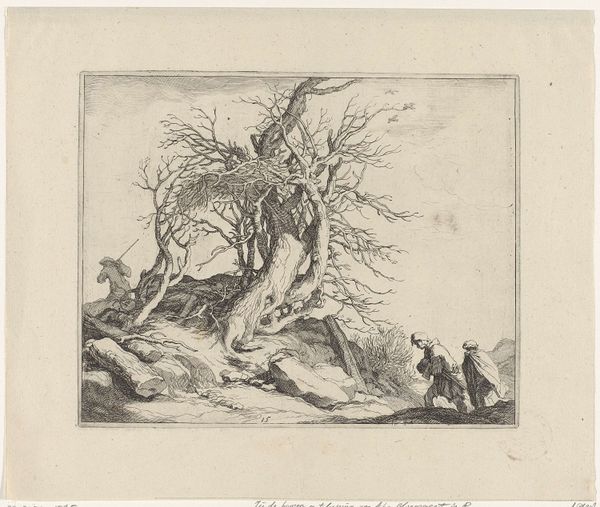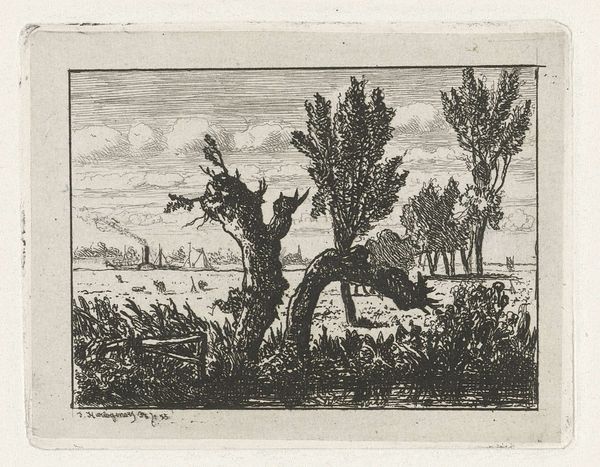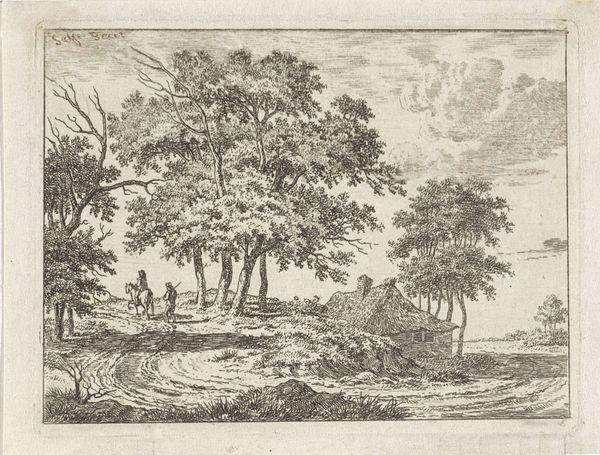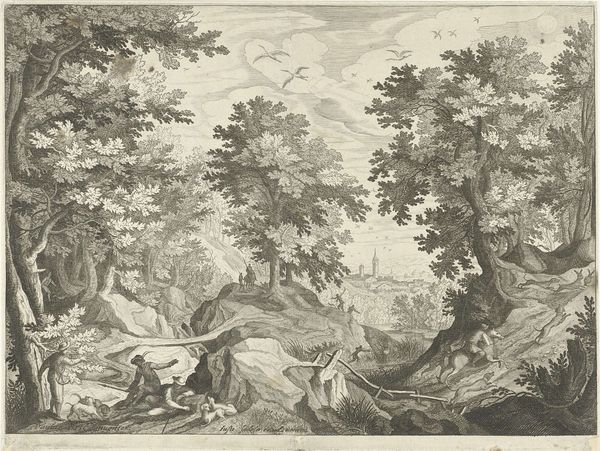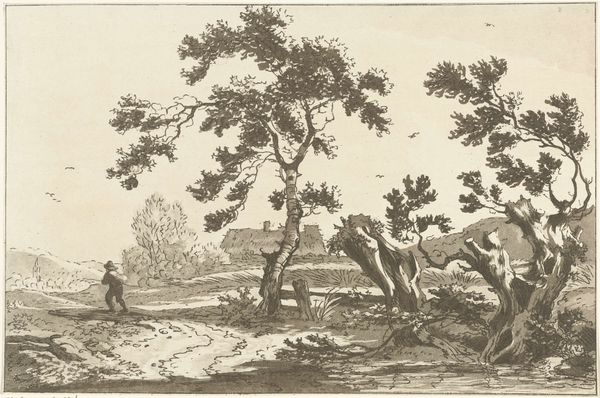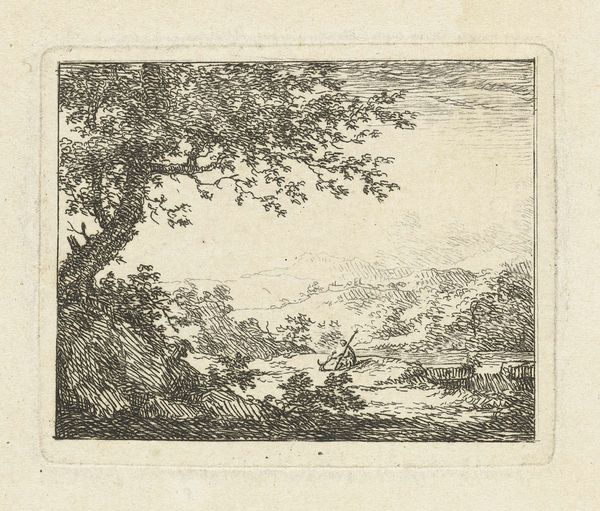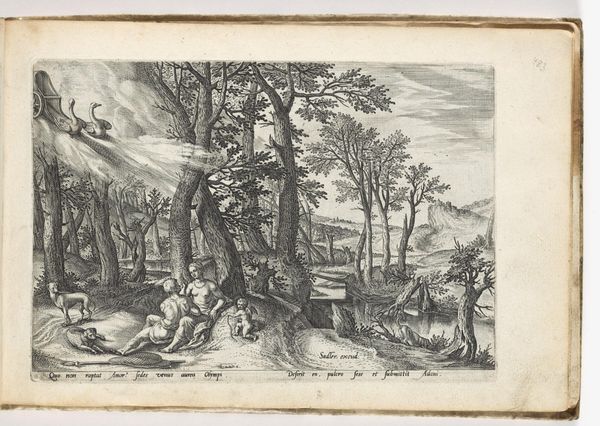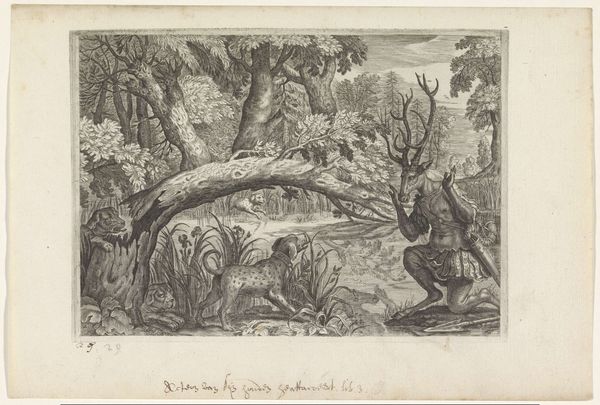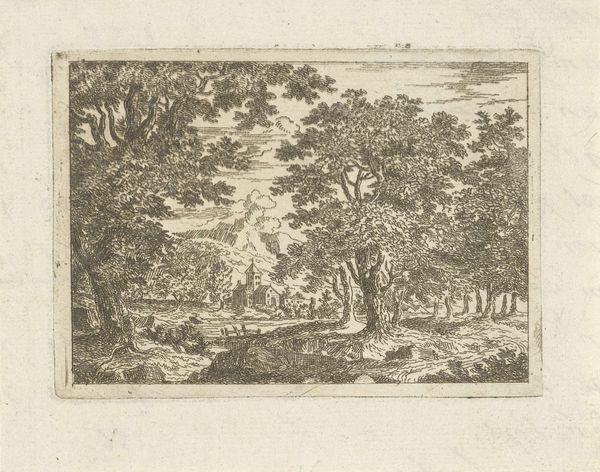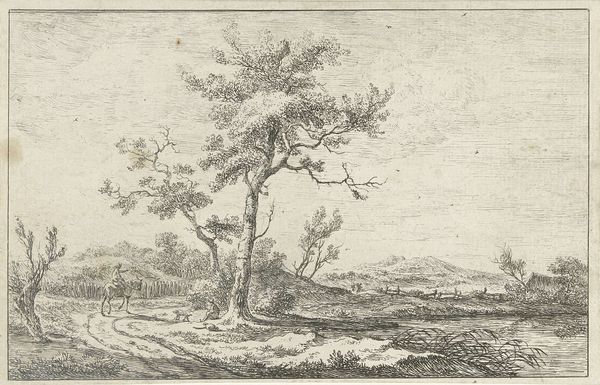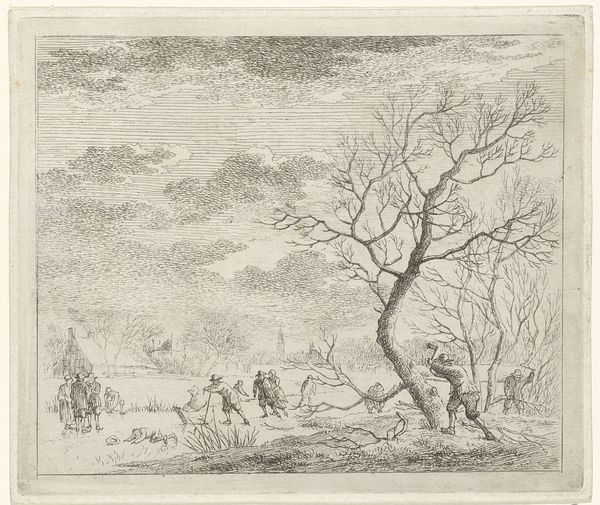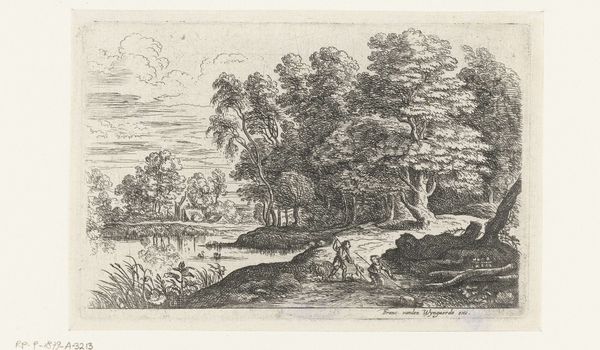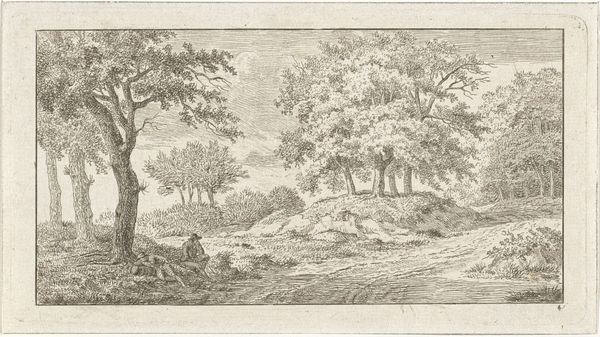
print, etching, engraving
#
narrative-art
#
baroque
# print
#
etching
#
old engraving style
#
landscape
#
history-painting
#
engraving
Dimensions: height 83 mm, width 106 mm
Copyright: Rijks Museum: Open Domain
Curator: What strikes you most about this stark, detailed engraving? Editor: Immediately, it’s the desperation. This landscape is almost swallowed by conflict, tiny figures clashing across the water. You can feel the chaos in those etched lines, a raw vulnerability hanging in the air. Curator: That tension is beautifully captured, isn't it? The work is titled "The Franks Invade the Batavian Land, 253," crafted between 1722 and 1750 by Simon Fokke. As a print, its role was to disseminate historical narratives, reflecting 18th-century ideas about the past and national identity. Editor: It's interesting how grand narratives can be squeezed into such a small format. Makes you consider how information trickles down, morphs into something…more digestible. Curator: Indeed. The scene is busy but that skeletal tree really dominates. I suppose it centers us in a way amid all the warfare raging across the waters. Editor: That bare tree is quite symbolic. The image has almost a winter feel – a somber feeling; like everything is stripped bare and vulnerable, as if witnessing a natural disaster rather than simply a conflict of humans. Curator: These historical prints often aimed to construct a heroic or moral lesson, influencing public opinion about the nation’s origins. However, this also reminds us of how limited access to that narrative was for much of the populace. Editor: Looking at it now, it feels like a frozen moment, pulled from some epic saga and condensed into this small rectangle. Sort of like looking at a keyframe for something much larger. A key moment of transition, for everyone there at least. Curator: Exactly. We observe both the battle, but also reflect on its function as political and cultural tool – the layered narratives operating in that historical context and even for audiences today. Editor: Ultimately, pieces like these are little time capsules. Fleeting but important when considering shifts across societies, and our ever-evolving means of documenting such shifts, small but epic at the same time.
Comments
No comments
Be the first to comment and join the conversation on the ultimate creative platform.
